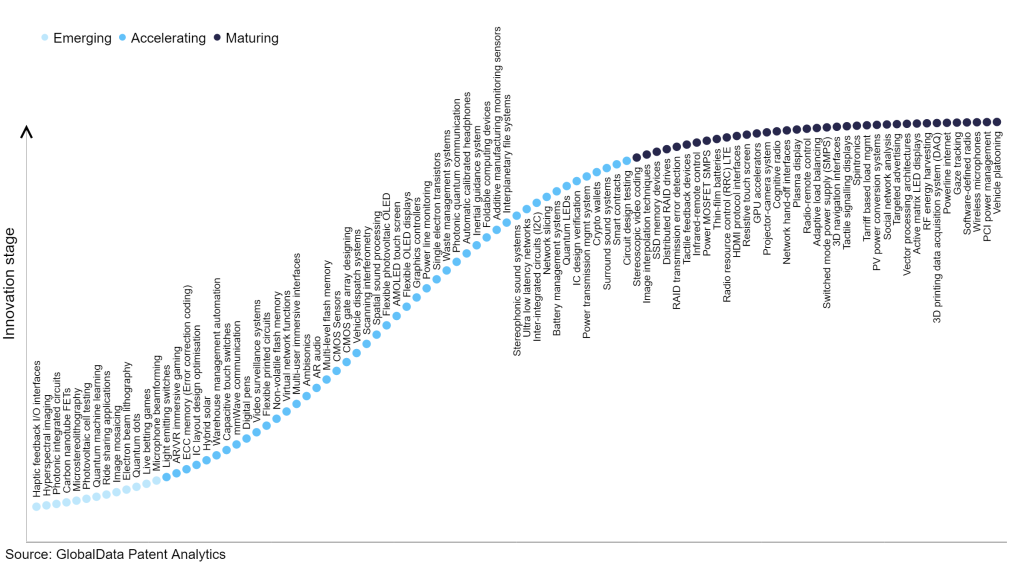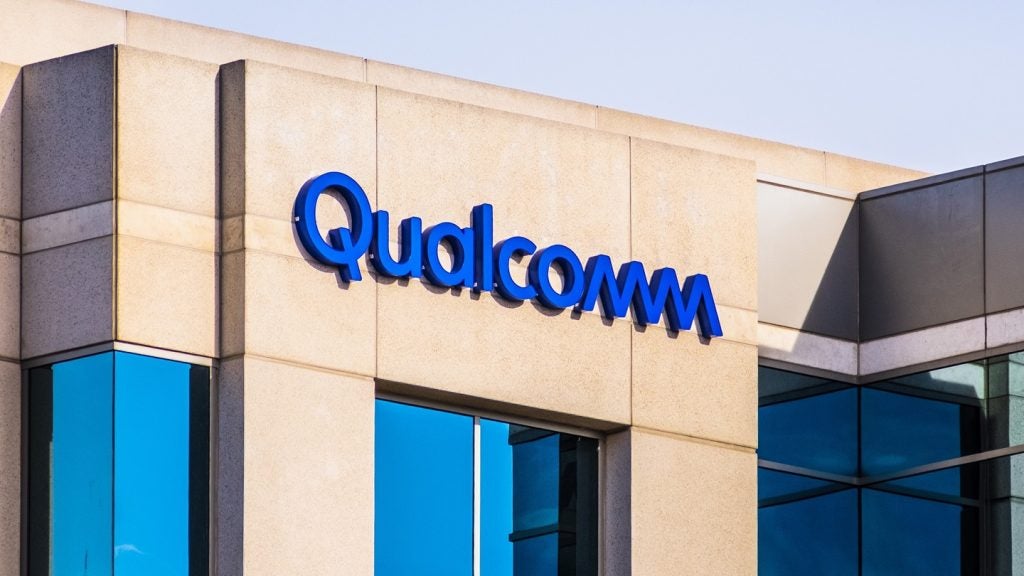The technology industry continues to be a hotbed of innovation, with activity driven by the increasing demand for energy storage systems in various industrial applications such as electric vehicles, renewable energy storage and grid-scale energy storage, and growing importance of technologies such as voltage and current sensors, temperature sensors, cell balancing, battery modelling and simulation, and state of charge (SoC) estimation. Advancements in battery technology, such as the development of high-capacity lithium-ion batteries, have further increased the need for more sophisticated and efficient battery management systems. In the last three years alone, there have been over 3.6 million patents filed and granted in the technology industry, according to GlobalData’s report on Technology Innovation: Battery management systems. Buy the report here.

Access deeper industry intelligence
Experience unmatched clarity with a single platform that combines unique data, AI, and human expertise.
However, not all innovations are equal and nor do they follow a constant upward trend. Instead, their evolution takes the form of an S-shaped curve that reflects their typical lifecycle from early emergence to accelerating adoption, before finally stabilising and reaching maturity.
Identifying where a particular innovation is on this journey, especially those that are in the emerging and accelerating stages, is essential for understanding their current level of adoption and the likely future trajectory and impact they will have.
300+ innovations will shape the technology industry
According to GlobalData’s Technology Foresights, which plots the S-curve for the technology industry using innovation intensity models built on over 2.5 million patents, there are 300+ innovation areas that will shape the future of the industry.
Within the emerging innovation stage, microphone beamforming, live betting games, and quantum dots are disruptive technologies that are in the early stages of application and should be tracked closely. Circuit design testing, smart contracts, and surround sound systems are some of the accelerating innovation areas, where adoption has been steadily increasing. Among maturing innovation areas are vehicle platooning, PCI power management and wireless microphones, which are now well established in the industry.
Innovation S-curve for the technology industry

Battery management systems is a key innovation area in technology
Battery management systems (BMS) refer to electronic systems utilised in monitoring, safeguarding, and regulating battery packs to optimise their performance, durability, and safety. The typical BMS is composed of a circuit board with embedded software and circuitry, designed to oversee the battery’s discharging and charging cycles, track its performance, and identify any defects or anomalies.
GlobalData’s analysis also uncovers the companies at the forefront of each innovation area and assesses the potential reach and impact of their patenting activity across different applications and geographies. According to GlobalData, there are 60+ companies, spanning technology vendors, established technology companies, and up-and-coming start-ups engaged in the development and application of battery management systems.
Key players in battery management systems – a disruptive innovation in the technology industry
‘Application diversity’ measures the number of different applications identified for each relevant patent and broadly splits companies into either ‘niche’ or ‘diversified’ innovators.
‘Geographic reach’ refers to the number of different countries each relevant patent is registered in and reflects the breadth of geographic application intended, ranging from ‘global’ to ‘local’.
Gogoro is the leading patent filer in battery management system. The company’s patents are aimed at inventing apparatus and methods for authentication, security, and control of power storage devices, such as batteries. A network of collection, charging and distribution machines such as batteries, supercapacitors and ultracapacitors are used to collect, charge, and distribute portable electrical energy. To charge, the machines employ electrical current from an external source, such as the electrical grid or an electrical service of an installation location.
By default, each portable electrical energy storage device is disabled from accepting a charge unless it receives authentication information from an authorised collection, charging and distribution machine, other authorised charging device that can transmit the authentication credentials. Each portable electrical energy storage device is also disabled from releasing energy unless it receives authentication information from an external device to which it will provide power.
Other prominent patent filers in the space include LG and Panasonic.
In terms of geographic reach, MinebeaMitsumi leads the pack, followed by Johnson Controls International and Omron Tateisi Electronics. In terms of application diversity Gogoro holds the top position, followed by ZTE and Emerging Automotive.
Battery management systems can provide enhanced safety and longevity by monitoring and optimising the charging/discharging process. It also helps to ensure efficient energy utilisation and prevents overcharging/discharging, maximising the battery performance and lifespan. To further understand the key themes and technologies disrupting the technology industry, access GlobalData’s latest thematic research report on Technology.
Data Insights
From

The gold standard of business intelligence.
Blending expert knowledge with cutting-edge technology, GlobalData’s unrivalled proprietary data will enable you to decode what’s happening in your market. You can make better informed decisions and gain a future-proof advantage over your competitors.







